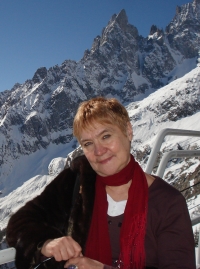
Position: Deputy Head of Department of physics of biological systems
Institution attended: Institute of Physics, NAS Ukraine, Department of Physics of Biological Systems
Scientific interests: Biophysics, Optics, Surface Science, Plasmonics.

|
Position: Deputy Head of Department of physics of biological systems Institution attended: Institute of Physics, NAS Ukraine, Department of Physics of Biological Systems Scientific interests: Biophysics, Optics, Surface Science, Plasmonics. |
Lecture title: SERS and SEIRA versus CARS and SFG (SDG) spectroscopy; sensitivity, advantages and disadvantages
Lecture abstract: Extremely small amount of substance under study that the researchers should work with in biology, medicine, pharmacology, art, etc. imposes some restrictions on the use of traditional techniques and makes necessary specific methods. For this reason, for analysis of the samples of extremely small amount, we offer a new approach to register the vibrational spectra based on the effect of enhancement, including traditional methods of IR and Raman spectroscopy as well different nonlinear methods like Sum-Frequency Generation (SFG) and Coherent anti-Stocks Raman Scattering (CARS). Despite of great interest to these effects, experimental application is not so simple and sometimes it is very difficult to reach high enhancement in the spectra. Enhancement factor in SERS and SEIRA is determined by 1) structure and morphology of metal surface; 2) type of the molecules and its organization on the surface; 3) geometry of the experiment, type of substrate materials etc. Such techniques as CARS and SFG give more enhancement (up to 1012 and more) factor when molecule located at metal surface. However, realization of these methods is complicated. SECARS (Surface Enhanced Coherent Anti-Stocks Raman Scattering) is sensitive to imaging of separate molecules and could be used for determination of the localization of different molecules inside cell. SFG is very sensitive to any transitions in molecule regardless of selection rules. Advantages and disadvantages of enhanced vibrational spectroscopy, numerous experimental data of SEIRA and SERS biomolecules and living cells, selected data on CARS are presented and discussed here.